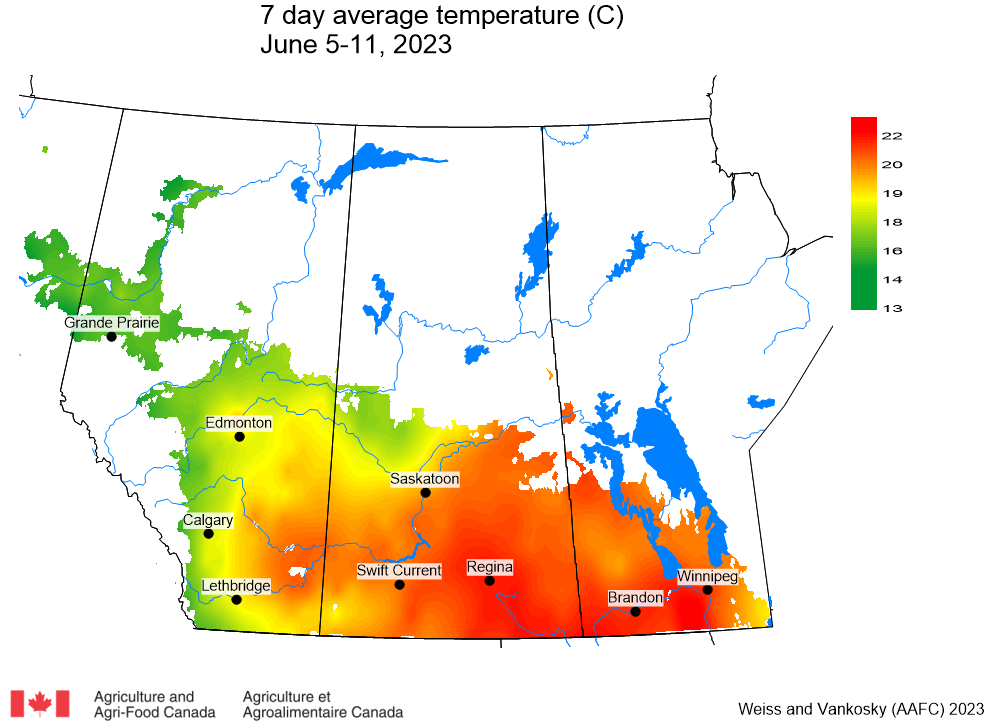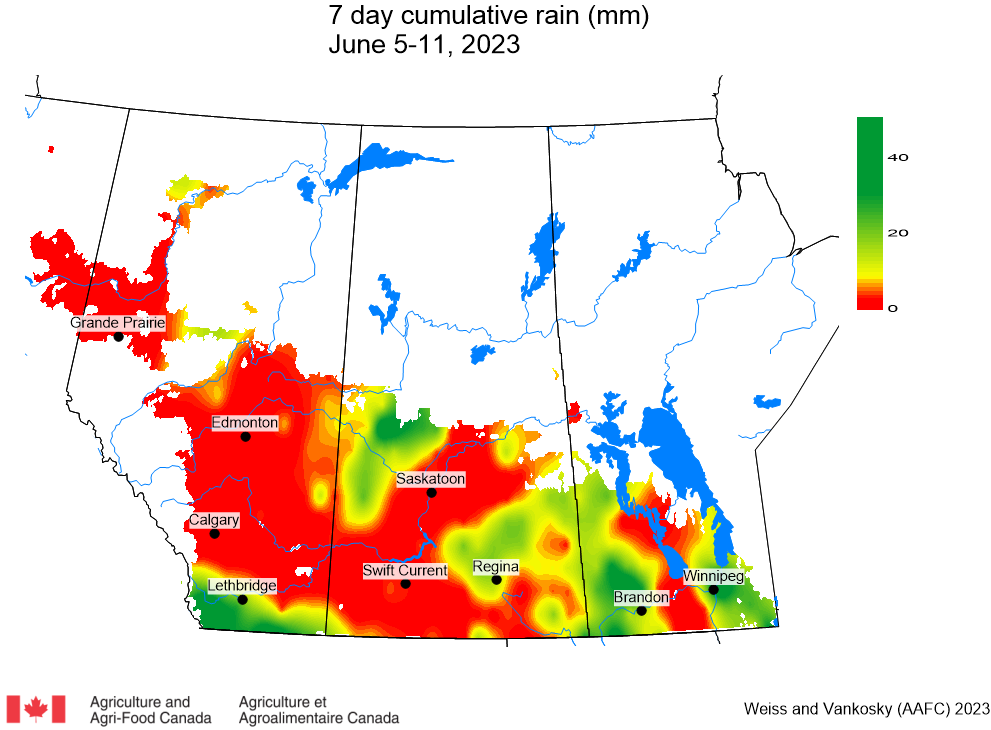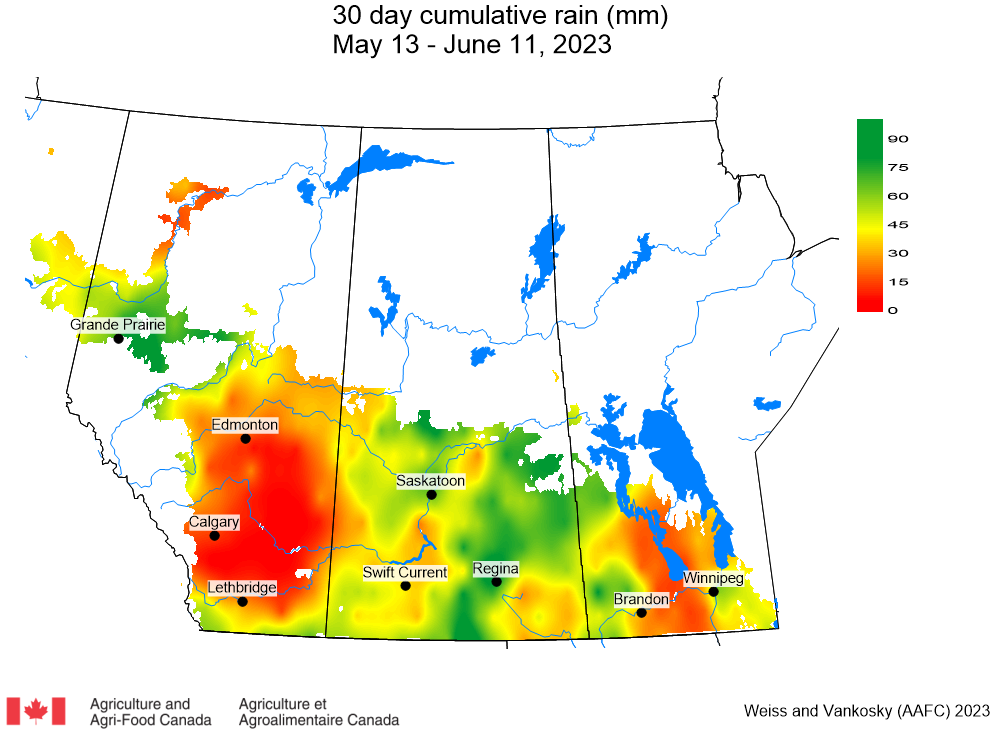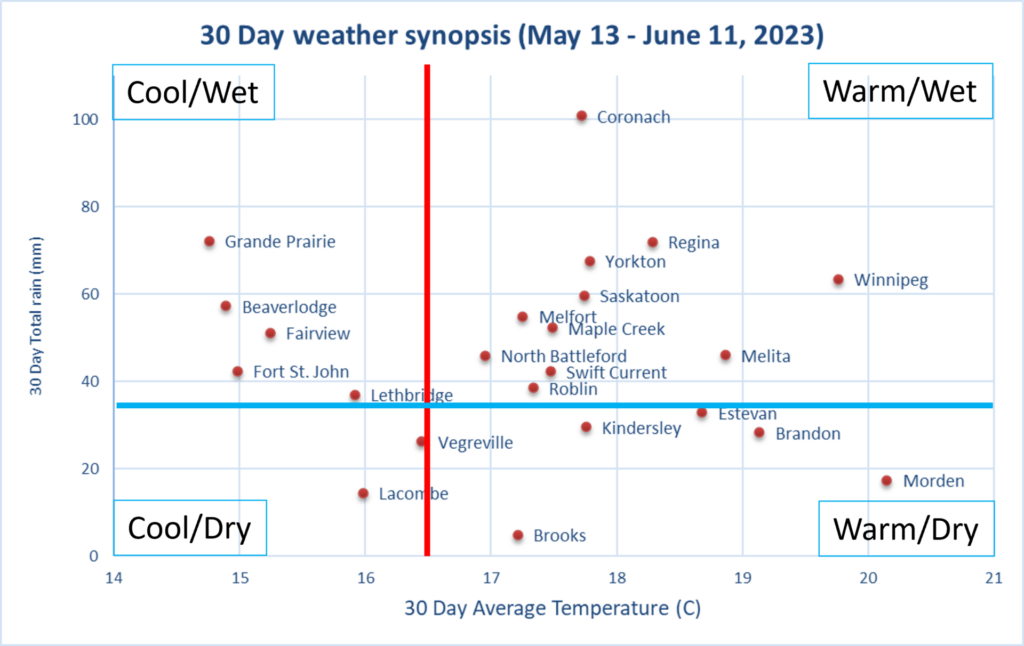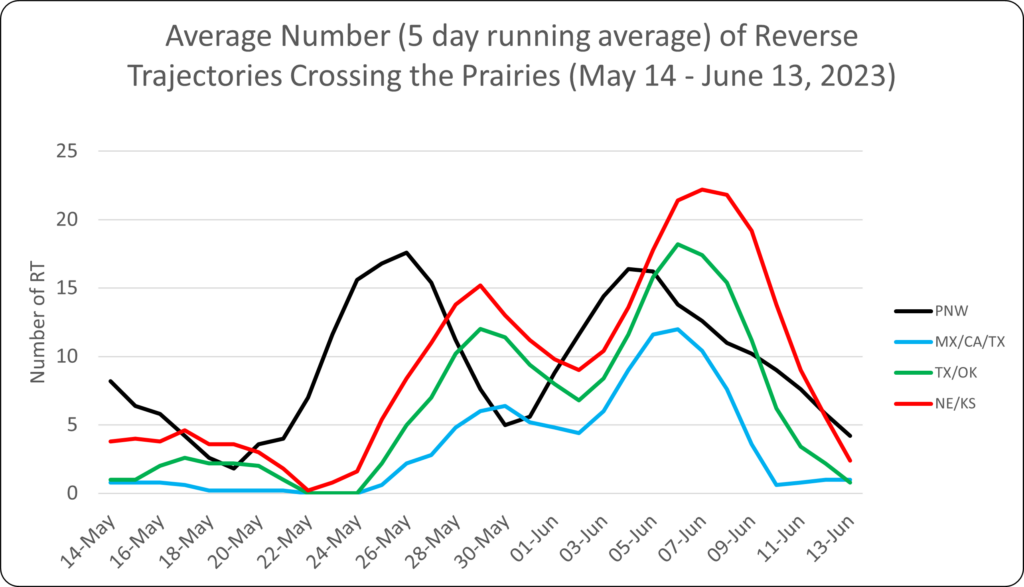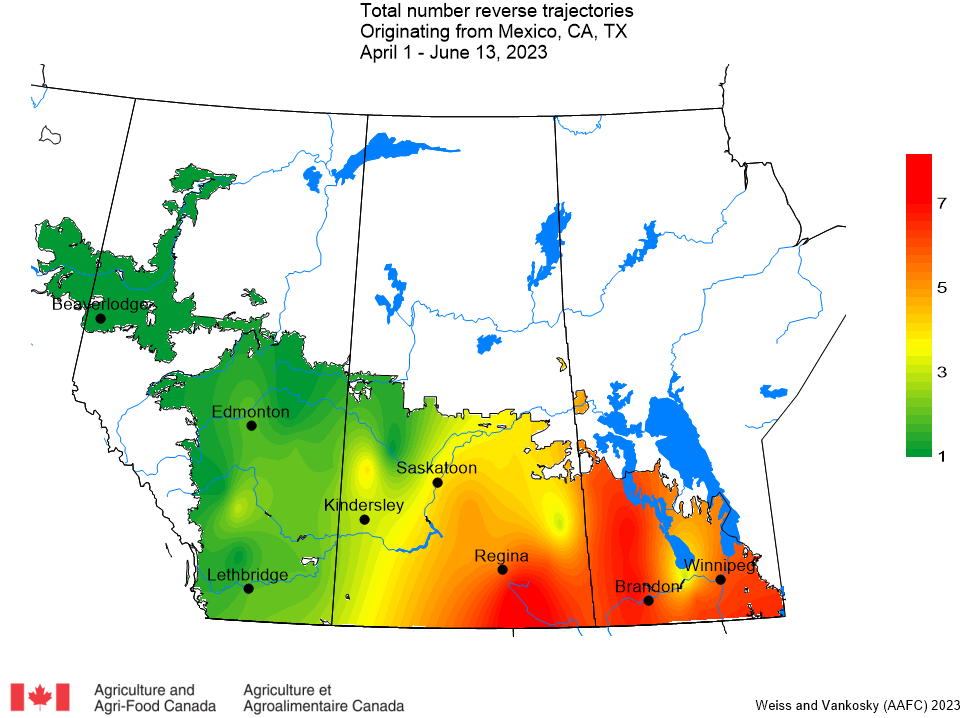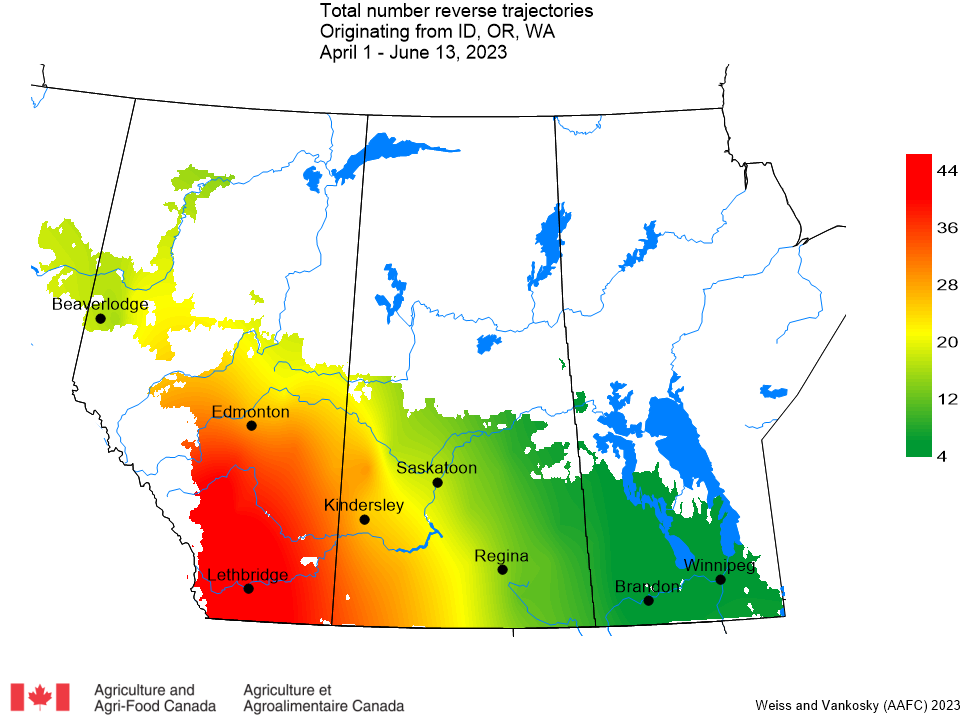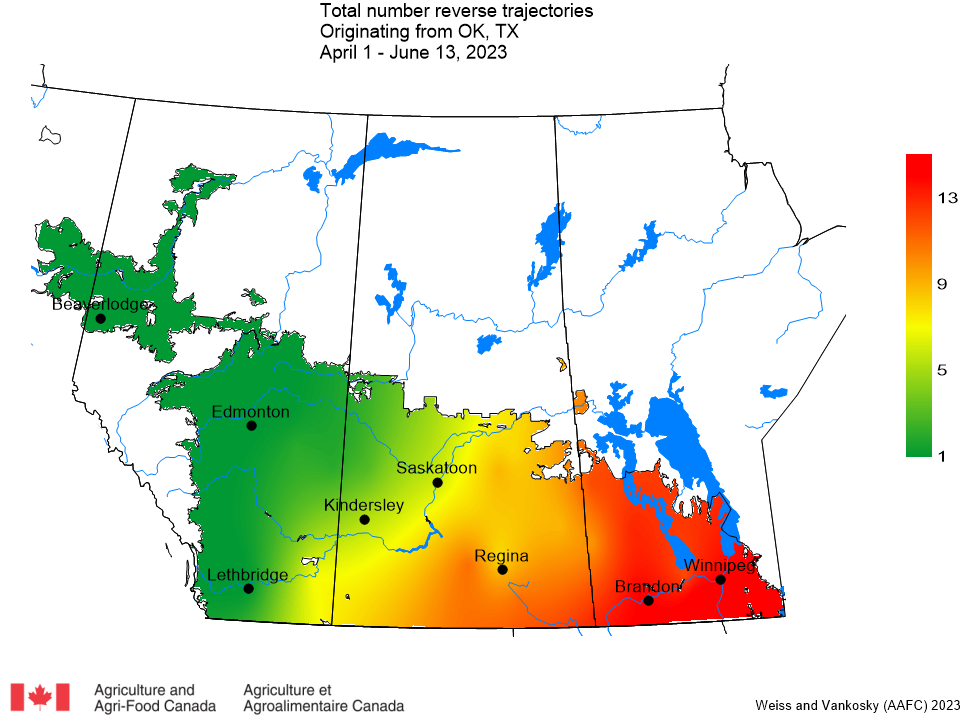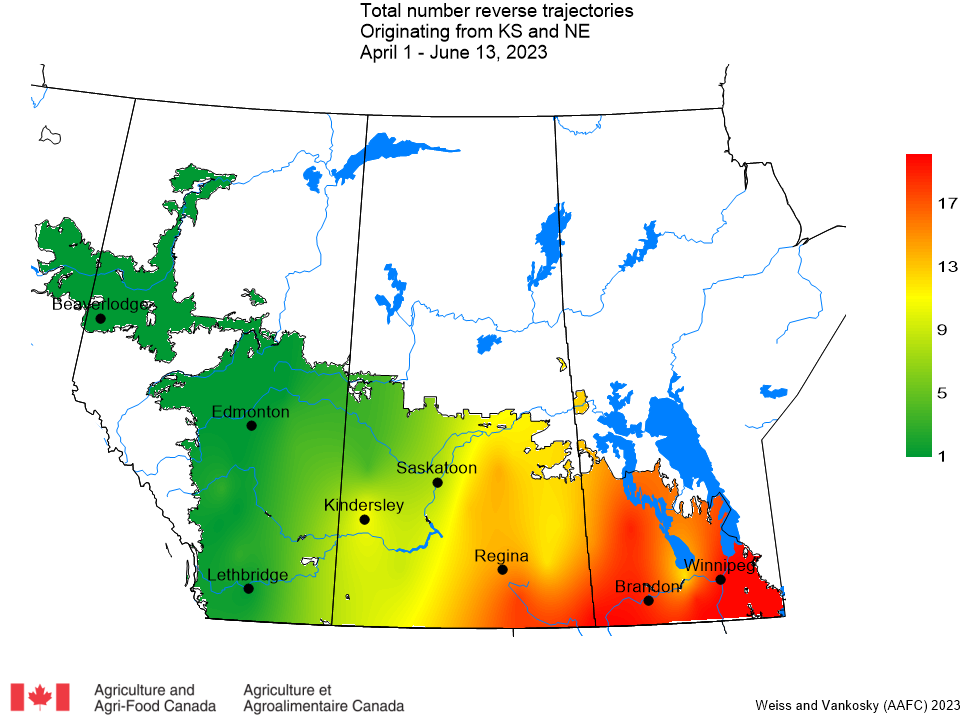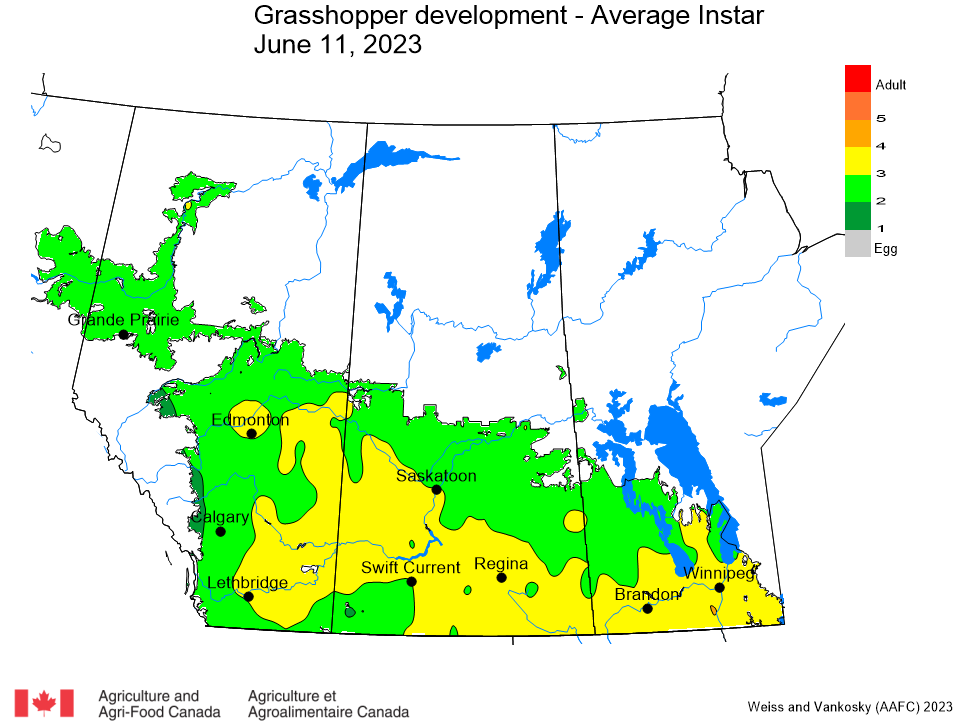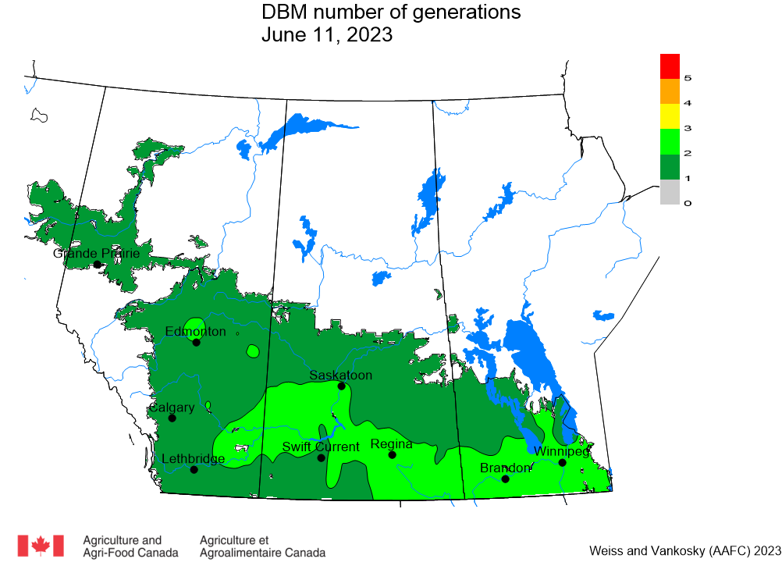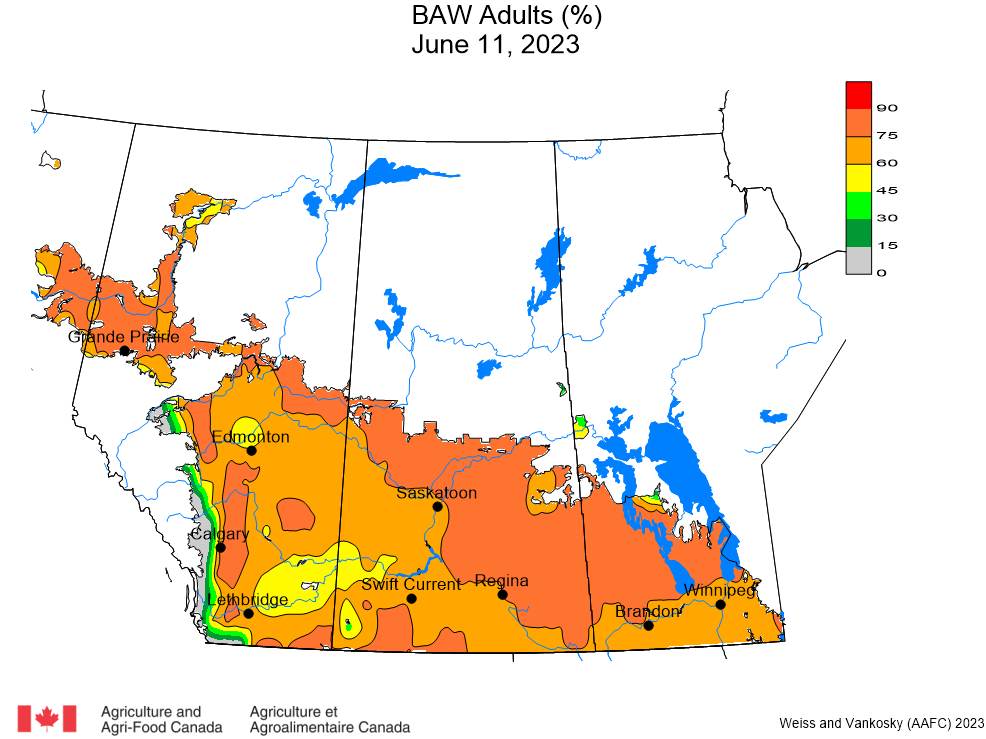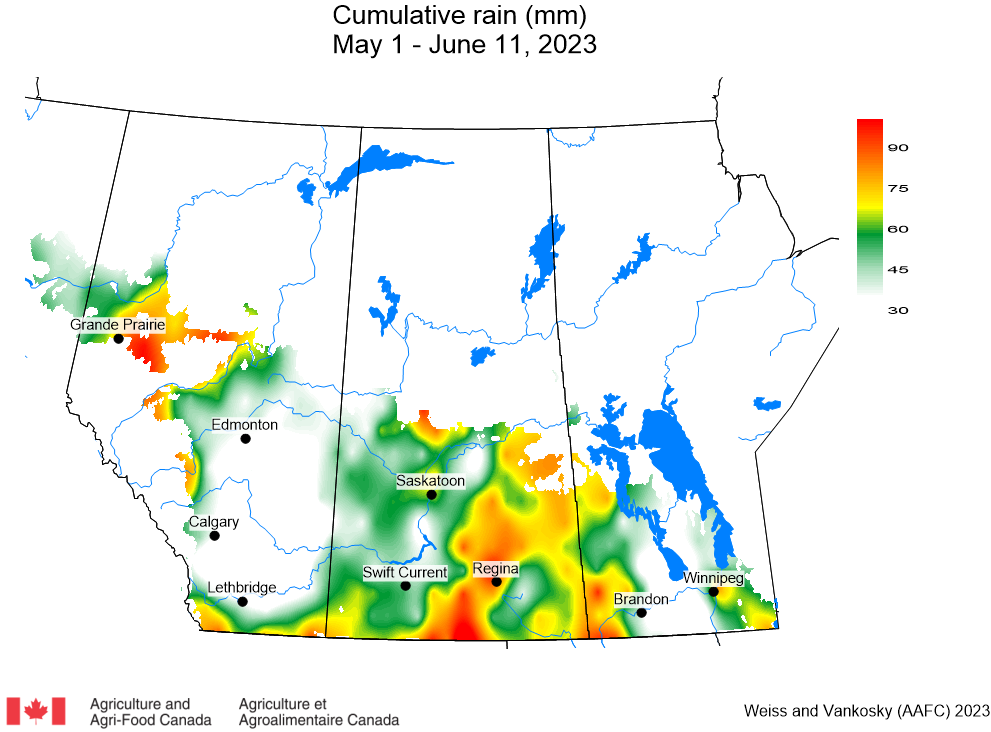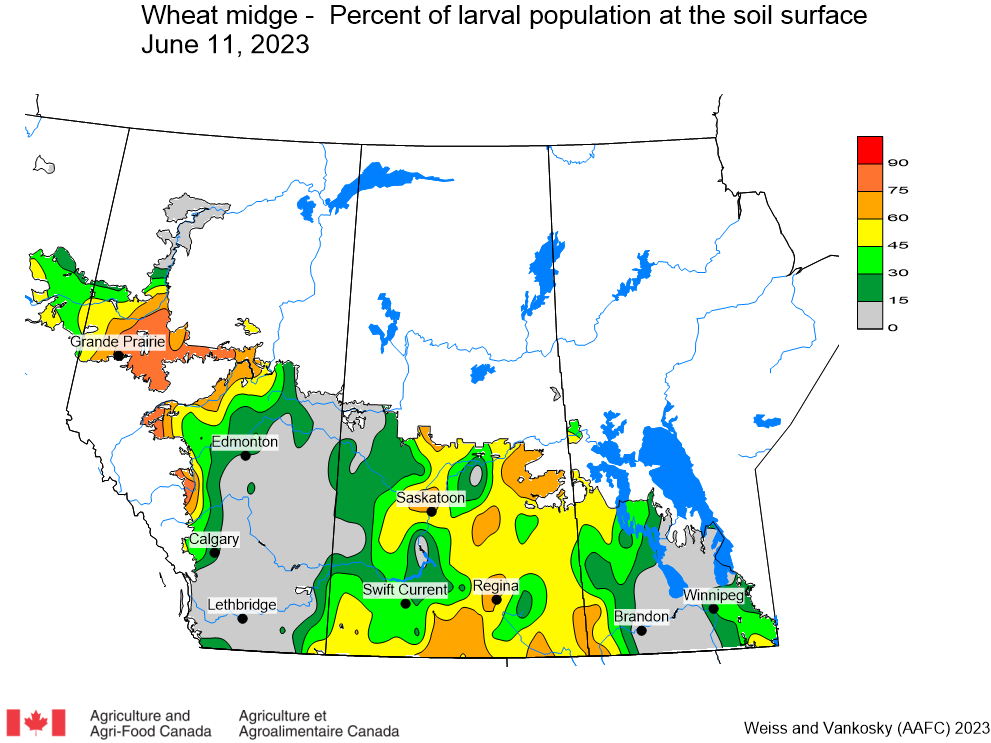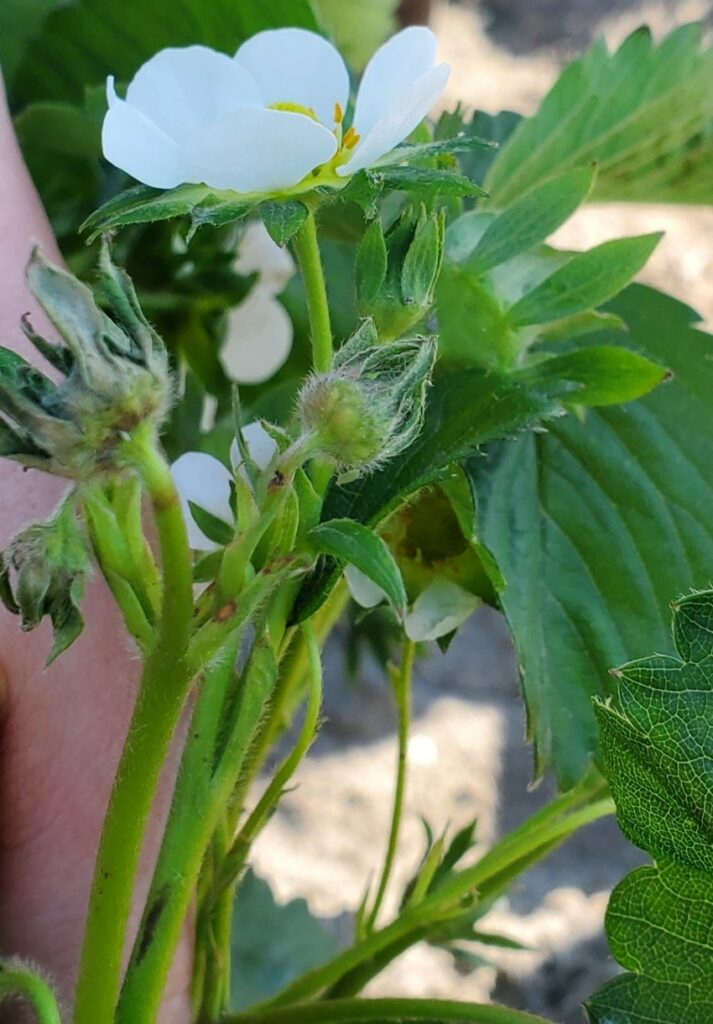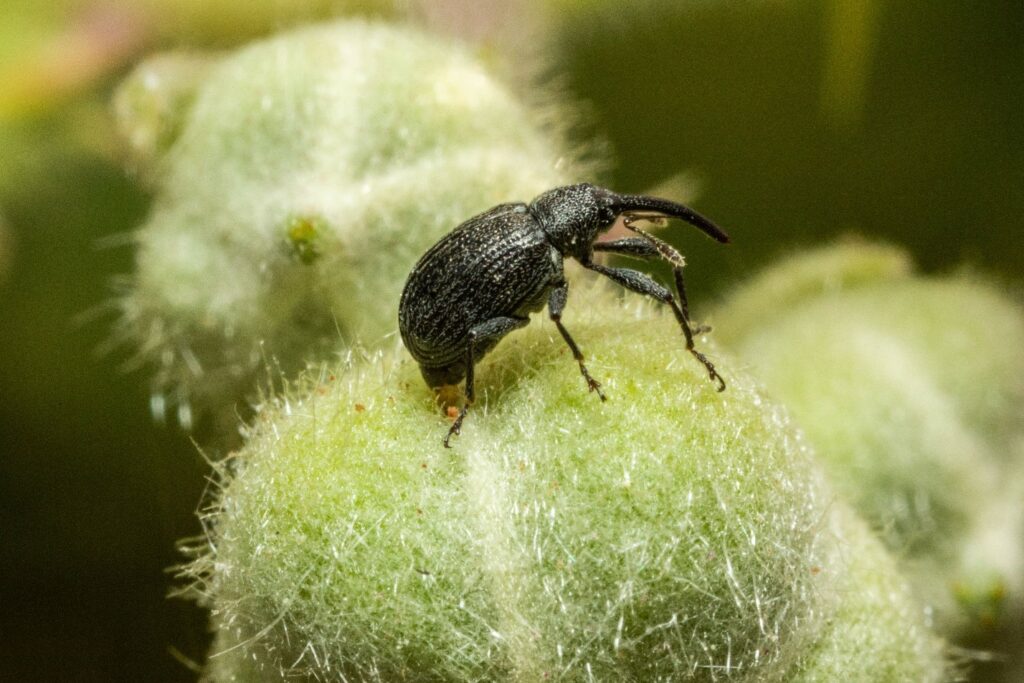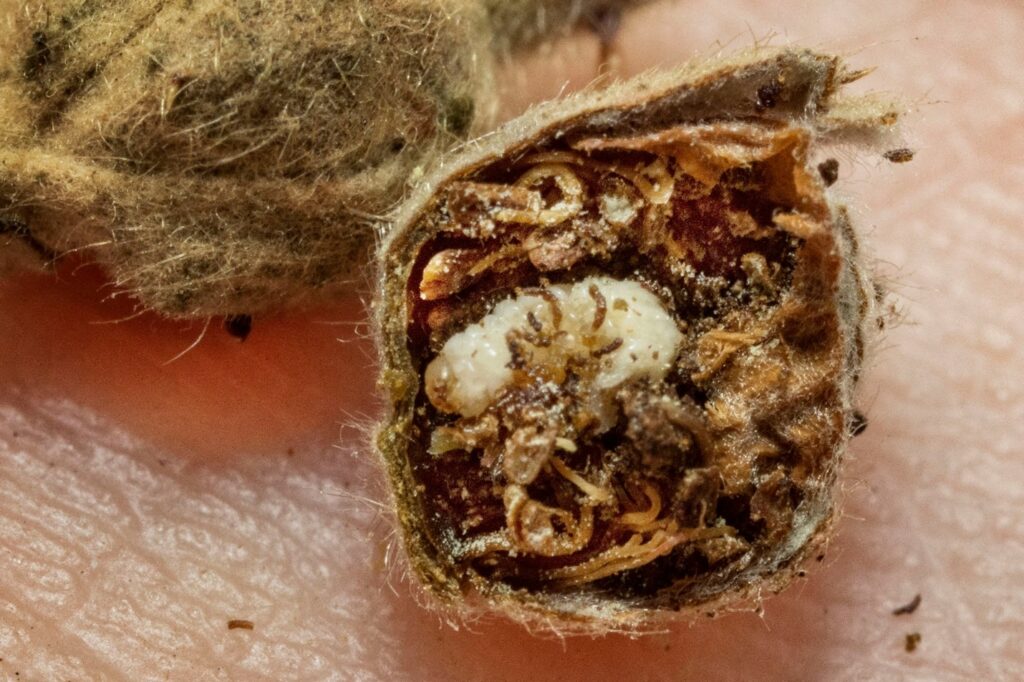This year it is as important as ever to scout and to monitor insect populations at the field-scale.
Grasshoppers thrive in warm, dry conditions. Some 5th instar nymphs were spotted in ditches in southwestern Saskatchewan in the past week, although there are many first, second, third, and fourth instar nymphs active as well. Signs of damage in the roadsides and field edges are being reported.
Diamondback moths develop rapidly when it is warm and their population densities can build up quickly with each generation. Be ready to scout if pheromone traps in your area have detected diamondback moths this spring and watch the provincial websites and PPMN updates for pheromone trap results.
Bertha armyworm development is also well ahead of schedule. Watch the provincial websites in Alberta, Saskatchewan, and Manitoba for reports on bertha armyworm pheromone trap captures for your area over the next few weeks; these provide an estimate of regional risk and are meant to guide in-field scouting.
This week, the Insect of the Week featured the strawberry blossom weevil. This is an invasive insect to Canada that is currently found in BC, but it is important to watch for it on the prairies in raspberry and strawberry patches.
Please read this week’s posts in the Weekly Update for more information about the insects listed above and for a sneak peak of wheat midge development!
Remember, insect Monitoring Protocols containing information about in-field scouting as well as information about insect pest biology and identification.
To receive Weekly Updates automatically, please subscribe to the website!
Questions or problems accessing the contents of this Weekly Update? Please contact Dr. Meghan Vankosky (meghan.vankosky@agr.gc.ca) to get connected to our information. Past Weekly Updates, full of information and helpful links, can be accessed on our Weekly Update page.

